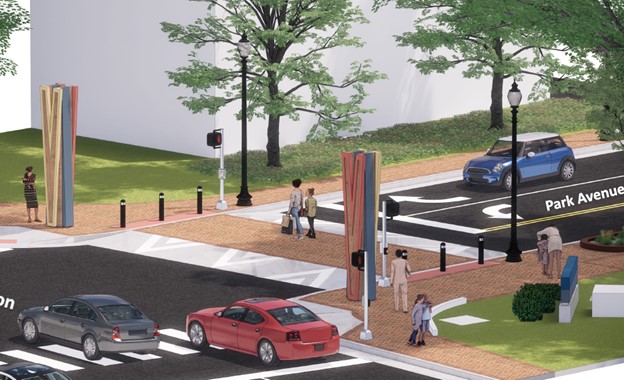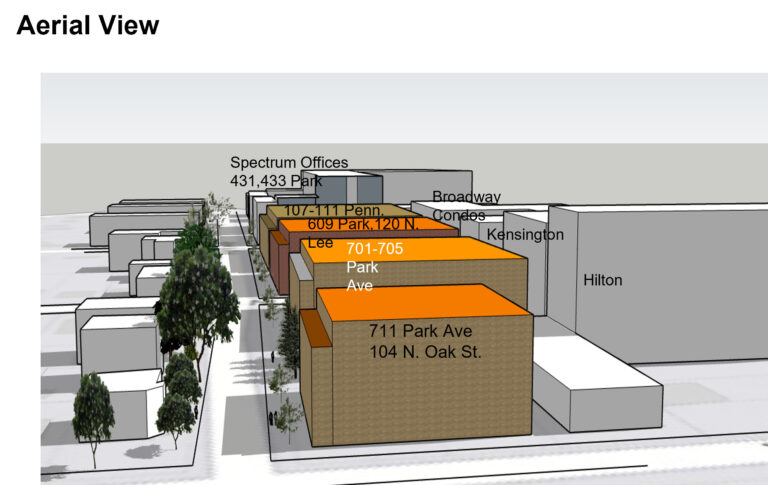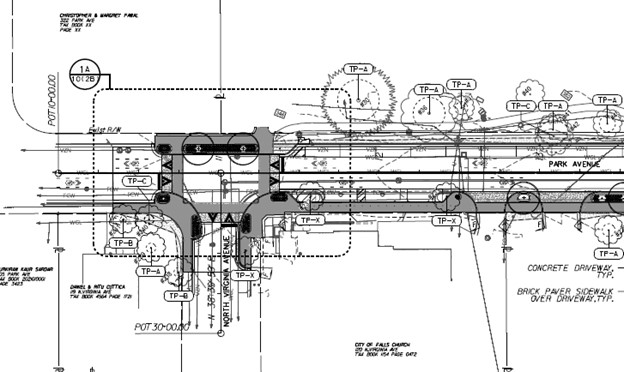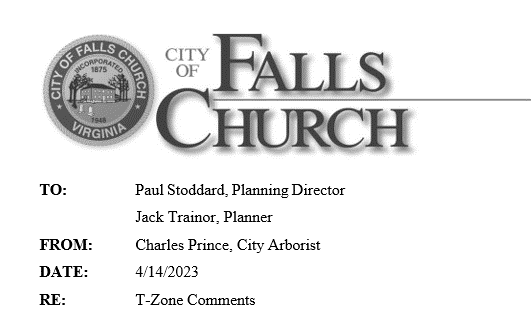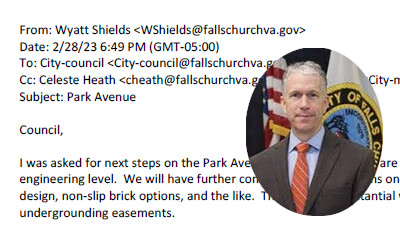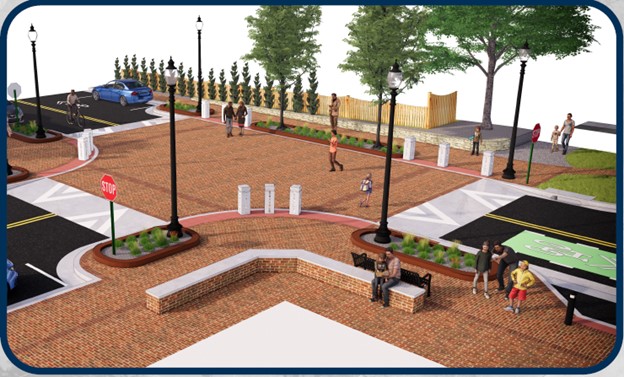Arborist Says Brick Sidewalks Are Too Costly, High Maintenance
At the April 19th, 2023, Urban Forestry Commission meeting, City Arborist Charles Prince said he has reservations about the brick sidewalks proposed in the 60% design for the Park Avenue Great Street Project. His reasons are:
- Cost – About $600,000 or 13% of the budget for materials alone.
- Higher maintenance requirement than concrete – Harris Teeter sidewalk, crosswalk are already deteriorating.
- Safety hazards – Tend to freeze first, a tripping hazard over time.
- No longer recommended by the Federal Highway Administration
Furthermore, the new and replacement sidewalks cut very close to many existing mature trees with half their roots concentrated around the edge of the path. The installation of brick paver sidewalks would require excavating to a depth of at least 14 inches, enough to destroy the vital surface roots of any tree next to the sidewalk. A tree standing next to a sidewalk would be critically damaged as half its roots would be destroyed. There are at least 15 such trees identified in the design. Read our post on this issue here.
The video clip (1m 30s) is shown below, followed by the transcript. The City recording of the full meeting is available here.
Transcript (edited for readability)
Prince: One other thing – I guess it’s the most controversial comment – I’m against the brick sidewalks. [They are] about $600,000 or about 13% of the budget, and that’s just for materials alone, not installation. So, I have found some examples from the Federal Highway Administration – their document from 2009 suggests not using brick. Of course, you still can and there’s criteria. Just from my experience walking around the City… I’m against brick sidewalks, and I know that’s very controversial so we’ll see how that conversation goes.
Hardi: I can chime in on this one. So there’s been interest on Council that we should revisit that as a streetscape standard. It was done right when I was on Council in 2015, 2016 or so. The issue is very bold. One, it’s really expensive to maintain. Two, it’s actually an accessibility issue – it freezes over first, and, three, it kind of creates tripping hazards as it ages over time. And so several of us have said – hey, let’s revisit the standards so that we can look at things like stamped concrete which looks like brick and gives the feel of it especially if it’s dyed the same brick color. So that is something we’ve asked to be put on our work plan, but we’ve not gone into it yet. I don’t know what staff will do with that comment because, officially, the standards still say brick sidewalks, even though there’s some of us who have said let’s revisit that.
Prince: Yes, you’ve hit on three of my main points for that. My fourth is maintenance. So if you look…around Harris Teeter, there’s still some raised bricks, brand new. Of course, there’s the crossing there where the work is deteriorating. But it’s really the cost. I mean I worked with the cost sheet, it’s over $600,000 just for the brick pavers. I gave some examples for the other staff from the Federal Highway Administration, where you have the concrete sidewalk but then you have the brick border, so you still get the look. I do like the look of the raised brick planters. So, yes, it’s not brick itself that I’m against. It’s just brick as a sidewalk. Those are the big comments I had on the 60% (design).

